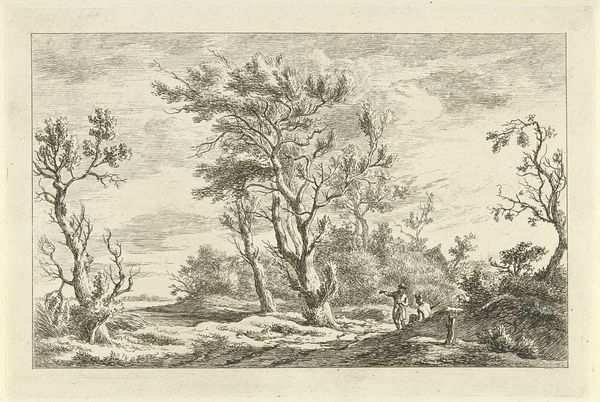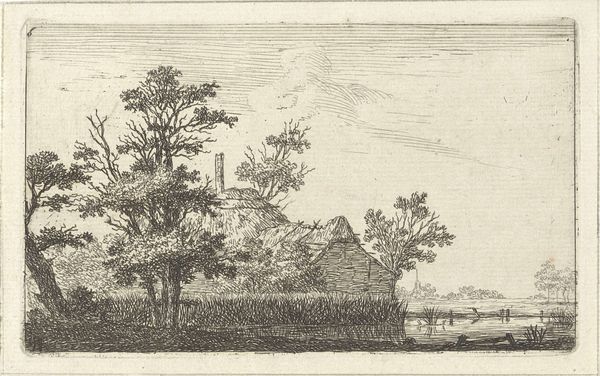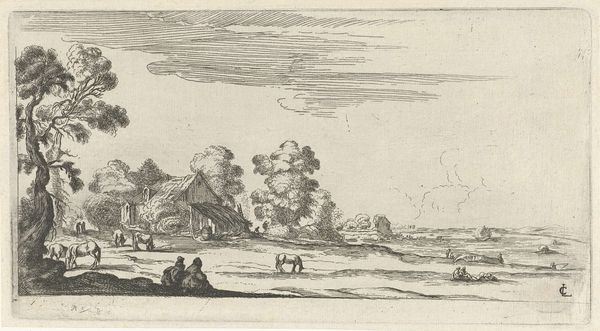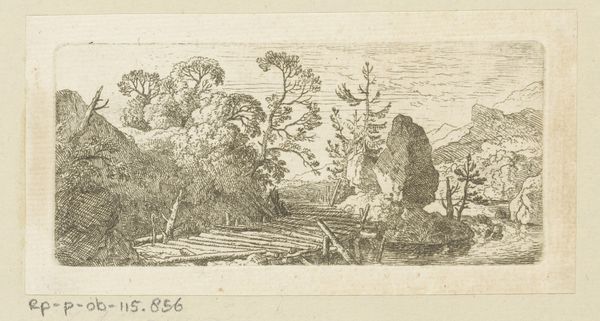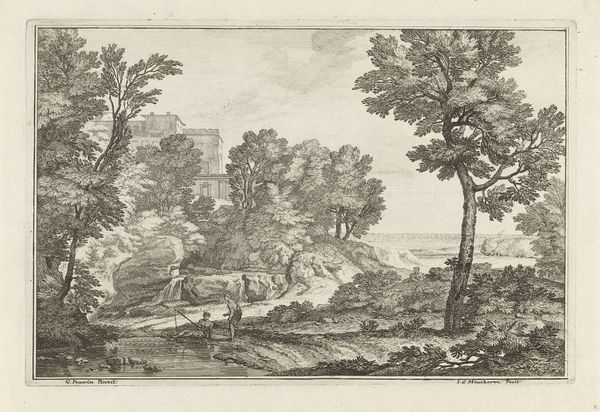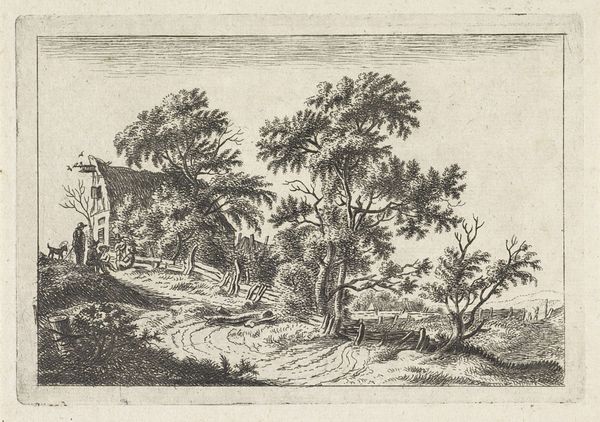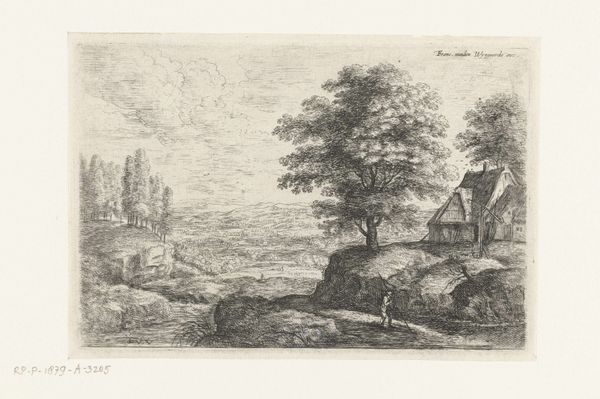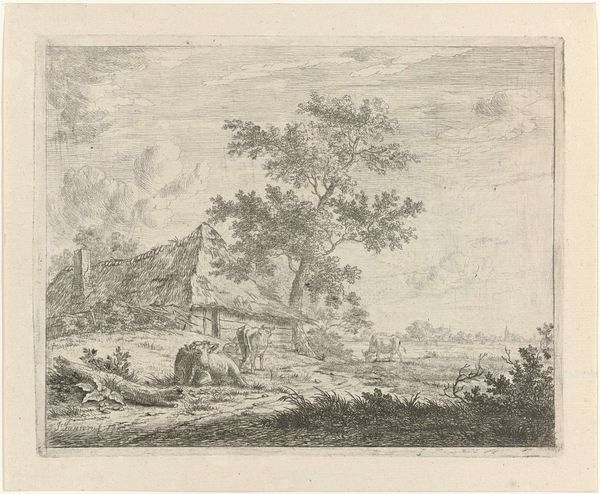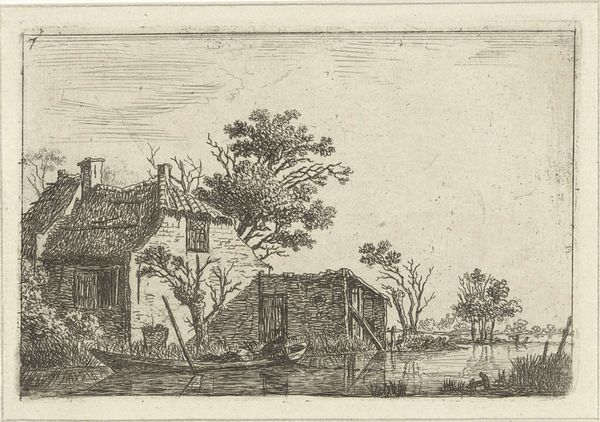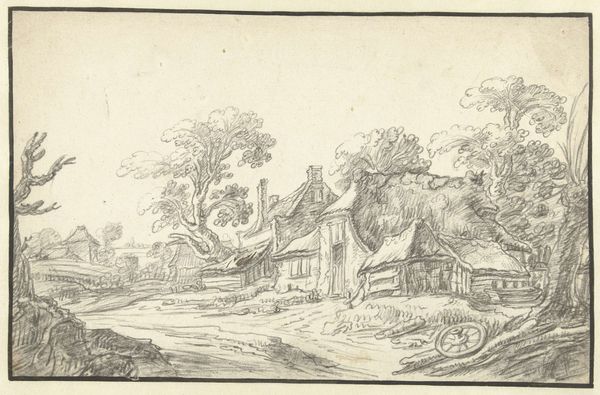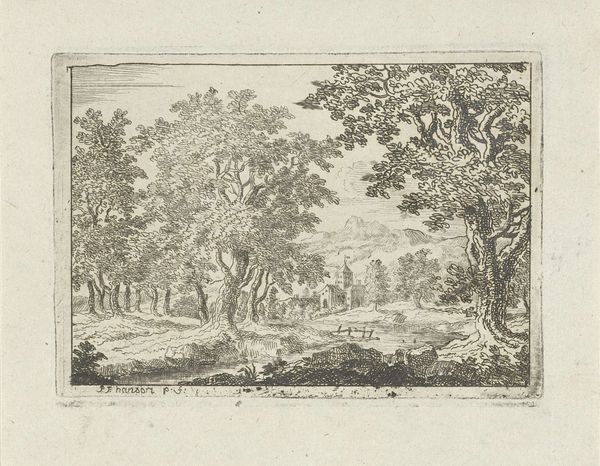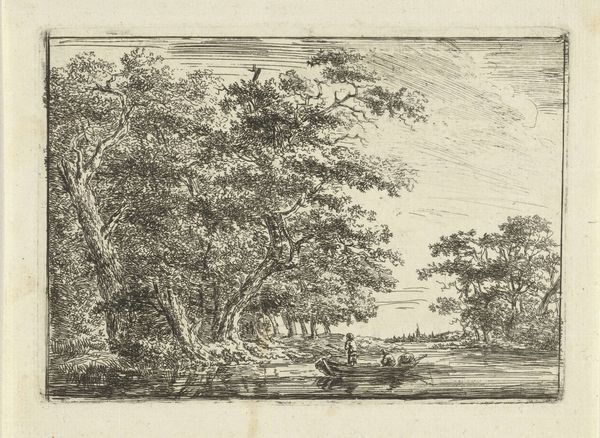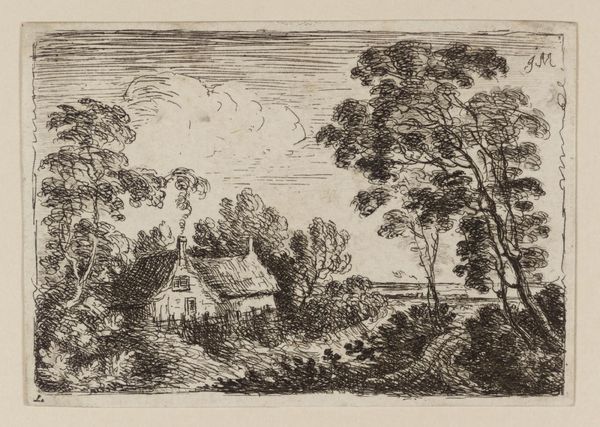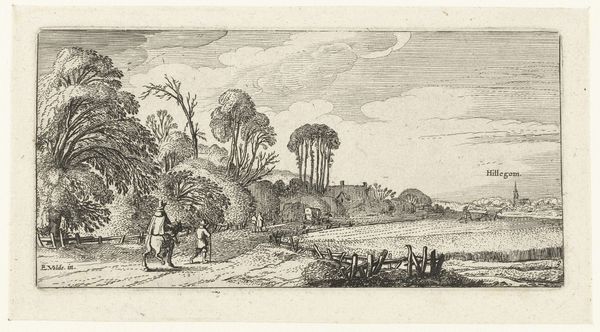
engraving
#
dutch-golden-age
#
landscape
#
history-painting
#
engraving
Dimensions: height 98 mm, width 178 mm
Copyright: Rijks Museum: Open Domain
Editor: This engraving, "Boerderij tussen bomen aan een rivier," or "Farmhouse Among Trees by a River," is an anonymous work from the Dutch Golden Age, dating roughly between 1610 and 1650. I find the rendering of textures in the trees especially impressive. How do you approach a work like this? Curator: Considering the Dutch Golden Age’s focus on trade and emerging capitalism, what raw materials were available and how were they accessed for the engraving process itself? Consider the paper, the ink, the metal of the plate, and the tools. Editor: I guess I hadn’t thought about where the materials came from. Curator: Furthermore, the depiction of the farmhouse connects to systems of land ownership and agricultural labor. Who owned the means of production, that is, the land, the buildings, and the tools? And who performed the labor in this setting? These aren't merely aesthetic questions. The labor of creating art, and art’s depiction of labor, both need exploration. Editor: That makes me wonder about the market for engravings like this. Was it aimed at the land-owning class? To perhaps decorate their homes with images of rural life? Curator: Precisely. Understanding who purchased these images sheds light on the social dynamics of the time. What narratives about rural life were being consumed, and how might that relate to the artist's, or workshop's, position in that market? The relatively widespread distribution of engravings implies a commodification of the rural landscape itself. Editor: So the medium itself and its accessibility shapes how we see the landscape and its people. That’s a powerful point to consider. Thanks for this perspective! Curator: It shows us the very materials and processes shape the artistic narrative.
Comments
No comments
Be the first to comment and join the conversation on the ultimate creative platform.
